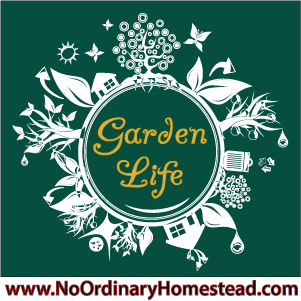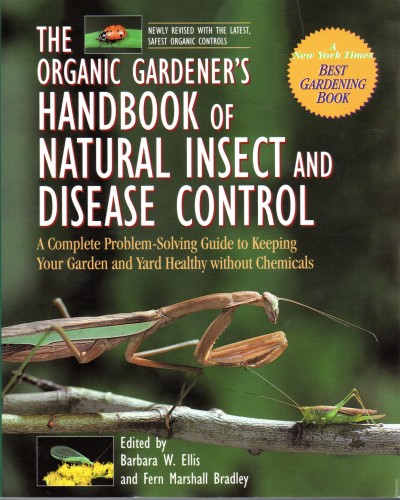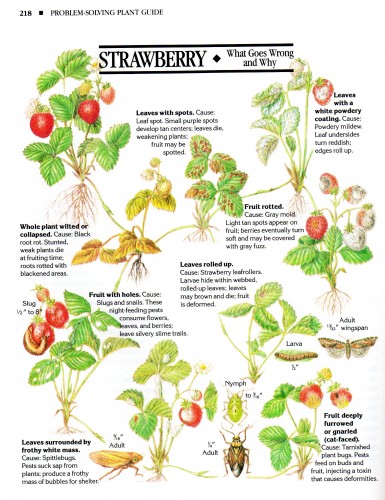 Have you ever awakened one morning to find your plants covered in strange little black bumps? Or sprayed the aphids from your plants for the 100th time but still don’t seem to ever successfully be rid of them? Would you like to know how to once and for all deal with insects and diseases of all shapes and sizes on your plants with natural and organic methods without searching online for hours? How about being able to check out detailed photos of what your plants might look like right now with solutions nearby of how to deal with the troubles?
Have you ever awakened one morning to find your plants covered in strange little black bumps? Or sprayed the aphids from your plants for the 100th time but still don’t seem to ever successfully be rid of them? Would you like to know how to once and for all deal with insects and diseases of all shapes and sizes on your plants with natural and organic methods without searching online for hours? How about being able to check out detailed photos of what your plants might look like right now with solutions nearby of how to deal with the troubles?
Wow. That totally sounded like an infomercial. But that is exactly what I’ve found myself using this book for. The Organic Gardener’s Handbook of Natural Pest and Disease Control: A Complete Guide to Maintaining a Healthy Garden and Yard the Earth-Friendly Way is my go to book whenever something goes wrong with my plants. I not only used it to get rid of funky black scales on my houseplants, but also to save my rosemary bush that was becoming infested with furry mildew. If it’s not in there, I know I’m in trouble because we’re being attacked by aliens. 😉
There are tons of websites out there with information about organic remedies for your garden, but in my experience, I’ve often run into a lot of conflicting advice as well as stuff that was just downright wrong. So it’s nice to have all the information I need in one 500+ page book that has (so far) never steered me wrong.
I actually have the 2006 version and I’m not really sure what the difference is between the two, aside from the fact that you can get the newer version new for a better price, the covers look different and they’ve made the tagline of the book more trendy. Don’t you just love the idiosyncrasies of books?

The Nitty Gritty
Basically, the book is broken down into four parts: Plants, Insects, Diseases and Organic Controls.
-
- In the plant-by-plant listing, you’ll be able to flip through alphabetically (by common name, not Latin) to get an overview of what issues you may be facing with your plants. Glean some tips on how to grow the plants, what conditions they like, how to get the best germination rates and then the meaty stuff about disease and pests.
- Then you can get a closer look at common insects that may be harming your plants — but will also find an overview about bugs that are fine or even good for your garden. This book is quite thorough, and explains things like the life cycle of pests plaguing you, what they look like exactly (including images), where they are generally found in the world (so you know if you really need to be worried about boxelder bugs or not), what sort of damage they do and how to control them. I’ve found this to be extremely helpful not only in getting rid of bugs I already have, but also in knowing what to watch out for and giving myself some room for prevention.
- The Diseases section nicely describes how diseases are spread, how to control them, and most important, how to prevent them from even taking hold. You’ll figure out how to quickly recognize common diseases, as well as be able to see a detailed list of diseases with images, symptoms, what types of plants it affects, and prevention and control guidance.
- Part 4 is all about Organic Controls, creating a plan for your garden to keep it healthy and how to go about implementing the plan. There are numerous tips in this section of actual remedies like how to get rid of slugs or make compost tea for getting rid of mildew. They also cover beneficial insects, common household items, companion planting, crop rotation and more.
A really nice feature of The Organic Gardener’s Handbook of Natural Pest and Disease Control are the What Goes Wrong and Why images throughout the book. The You can get a really nice visual representation of what is happening with your plants and what steps you need to do to save them. Naturally, these diagrams are just a jumping off point, because once you actually pinpoint what the problem is, you can flip to the following pages and read more about what exactly you can do to control the issue.

My final thoughts
This is one of those books that you reference over and over again but would not really read cover to cover. There are a lot of good things to learn in the introduction to plants, and of course in the Controls chapters as well, but I don’t know that anyone would want (or need) to go through and read about every bug or disease that could at some point assault your garden. Who needs to live in constant fear?
I highly recommend The Organic Gardener’s Handbook of Natural Pest and Disease Control for both newbie and seasoned gardeners. It’s a really well thought out book with everything you need to know about keeping your garden in great health, without dousing it in chemicals!
Just made your seed wish list? Starting seeds for winter hearty veggies already? Got a great recipe to share for garden goodness? I’d love to have you link up below! You can share about anything related to gardening, old or new posts, from recipes to harvesting to grow reports to DIY projects or inspiration.
Here’s how this works:
PLEASE READ THESE GUIDELINES, especially if you have never linked up before!
|
That’s it! Share your garden with us by linking up below!



We had an awful aphid season last year in San Antonio. Every backyard in our neighborhood was covered in slime (aphid-poo as my cousin the vet revealed to us…ewwww). Every yard except the handful of houses up the street who got together and bought hundreds of ladybugs to release… they were okay!
We have a terrible aphid problem outside on our roses. In the very front, we planted a bunch of lavender and that seems to have helped. But in our courtyard, we still have a bunch of them. We’ve been talking about buying ladybugs for around here since we rarely see any around. I figure it would be a good idea to repopulate the neighborhood as well as wipe out our aphid problem.